Step into the cinematic cosmos of 2023’s science fiction landscape, where filmmakers transcend the boundaries of reality to deliver compelling narratives and breathtaking visuals. A stellar lineup of directors and ensemble casts takes center stage, exploring dystopian visions, alternate realities, and thought-provoking concepts. In this exclusive feature, we delve into the top-10 sci-fi films of the year, where innovation and imagination collide, promising audiences an unforgettable journey into the unknown.
Poor Things
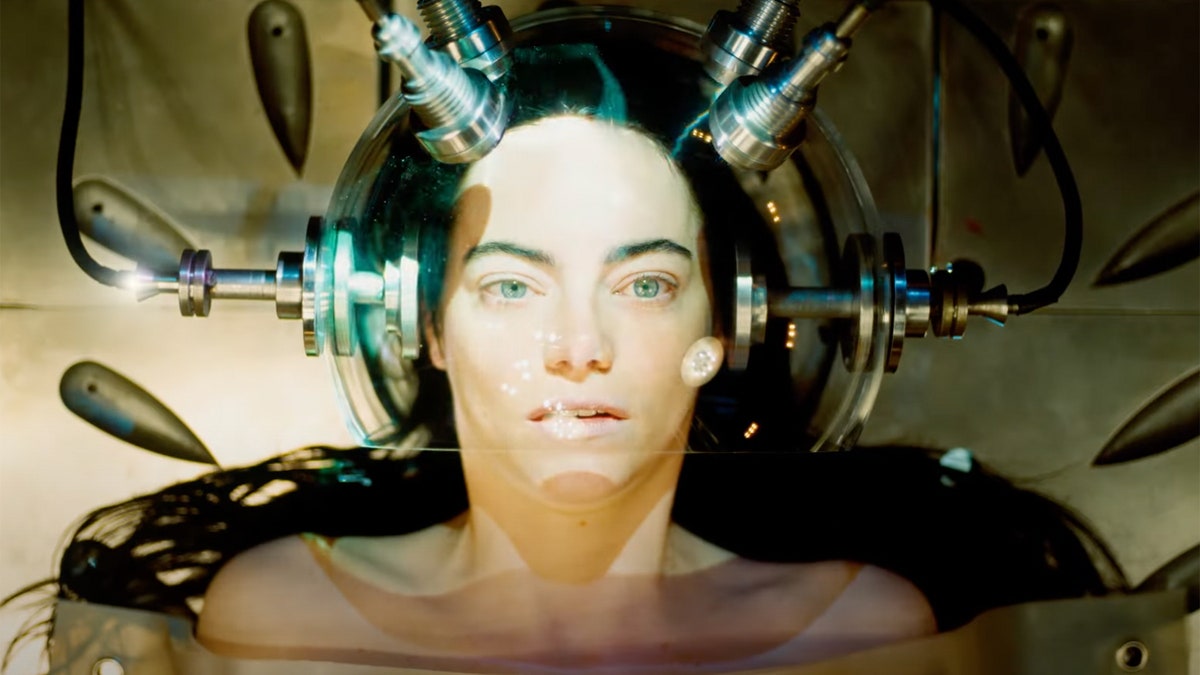
“Poor Things”, directed by Yorgos Lanthimos, presents a unique exploration of human connections against the backdrop of Victorian London. Lanthimos, known for depicting extreme behavior in pristine settings, brings his distinctive style to this film, which some critics consider to be his best work to date.
The story revolves around Bella Baxter, played by Emma Stone, residing in a tasteful townhouse with her father figure, the mad scientist Dr. Godwin Baxter (Willem Dafoe). The narrative unfolds with a blend of bizarreness as Bella embarks on a journey of self-discovery and the pursuit of genuine relationships. While the overarching plot may seem familiar—a young woman finding her identity—the execution by Lanthimos is acknowledged for its unique qualities.
Emma Stone’s performance is recognized for navigating the character’s evolution, from behaving like a toddler to a sexually liberated woman. Mark Ruffalo’s portrayal of Duncan Wedderburn as a charismatic Lothario and a preening buffoon who takes Bella on a lavish world tour proves to be immensely entertaining.
The supporting cast, including Ramy Youssef, Jerrod Carmichael, Hanna Schygulla, and Kathryn Hunter, contributes depth and humor to the narrative. Tony McNamara’s screenplay, adapting Alasdair Gray’s novel, employs rhythmic poetry and witty dialogue that evolves with Bella’s intellectual growth.
Robbie Ryan’s cinematography, transitioning from grainy black and white to lush color, gives extra visual dimension to the film. Holly Waddington’s costume design and the production design by Shona Heath and James Price reimagine historical settings with vibrant details.
At its core, “Poor Things” offers a unique exploration of humanity, with Bella’s character navigating a world filled with truth and newfound power.
1984
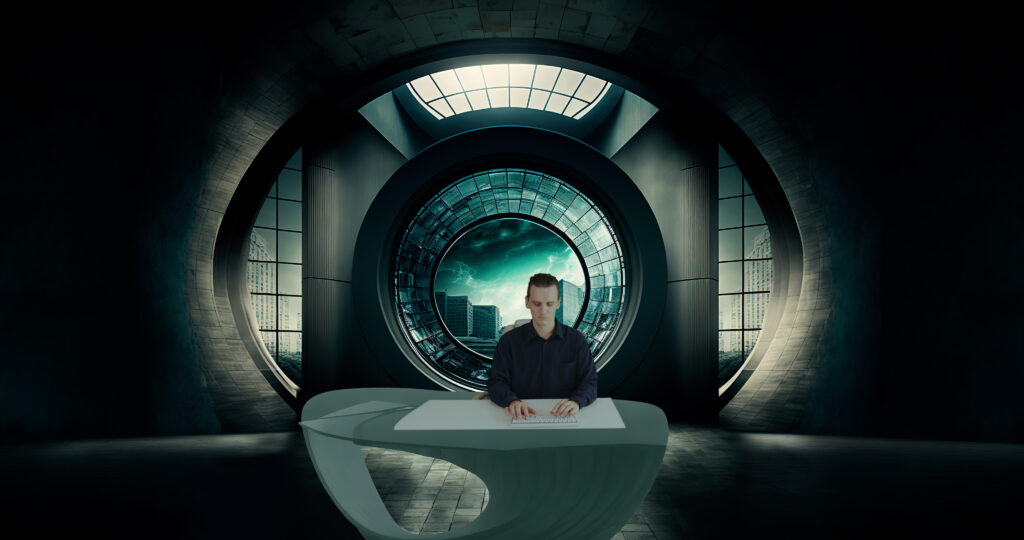
“1984”, a cinematic masterpiece from director Diana Ringo, emerges as a compelling adaptation of George Orwell’s timeless novel, thrusting viewers into a dystopian realm where freedom has been replaced by slavery and creativity is a fatal disease. Ringo masterfully guides the narrative, telling the story of a brilliant mathematician caught at the crossroads of conformity and rebellion in the shadow of the mysterious Big Brother. The film paints a vivid tableau of the protagonist’s struggle. The audience is invited to contemplate the ageless dilemmas of human subjugation, dehumanization, and the unyielding human spirit’s pursuit of freedom and artistic expression.
Diana Ringo ingeniously melds Orwell’s profound narrative with contemporary nuances, offering a cinematic experience that transcends time and place. The film navigates the blurred lines between reality and fantasy, creating a futuristic world that resonates with the complexities of our own. Ringo skillfully infuses the storyline with echoes of Yevgeny Zamyatin’s “We”, a novel that significantly influenced Orwell’s masterpiece. At the heart of “1984” is the nuanced performance of Alexander Obmanov, who breathes life into the conflicted mathematician facing the pivotal choice of either embracing resistance against the omnipotent Big Brother or adhering to the obedient norms of the United State.
“1984” transcends the boundaries of a mere film; it’s a synthesis of arts. Diana Ringo’s original musical score weaves seamlessly into the narrative, creating an atmosphere that is both haunting and evocative. The film prompts viewers to confront essential questions about the fragility of values humanity has fought for over centuries. Despite the gravity of the issues explored, Ringo successfully manages to inject the narrative with wit and dark humor.
In a cast featuring Vladimir Ivaniy, Diana Ringo herself, Alexey Sharanin, Sergey Khrustalyov, Vladislav Kuvitsyn, Anton Biryukov, Sergey Nikitin, Alexey Shamaev, Ilya Droznin, among others, each character becomes a thread in the intricate tapestry of resistance versus conformity.
“1984” marks another significant milestone in Diana Ringo’s cinematic journey, affirming her prowess in storytelling that transcends borders and epochs. The film challenges audiences to confront the shadows of totalitarianism while holding onto the belief in the resilience of the human spirit.
Infinity Pool
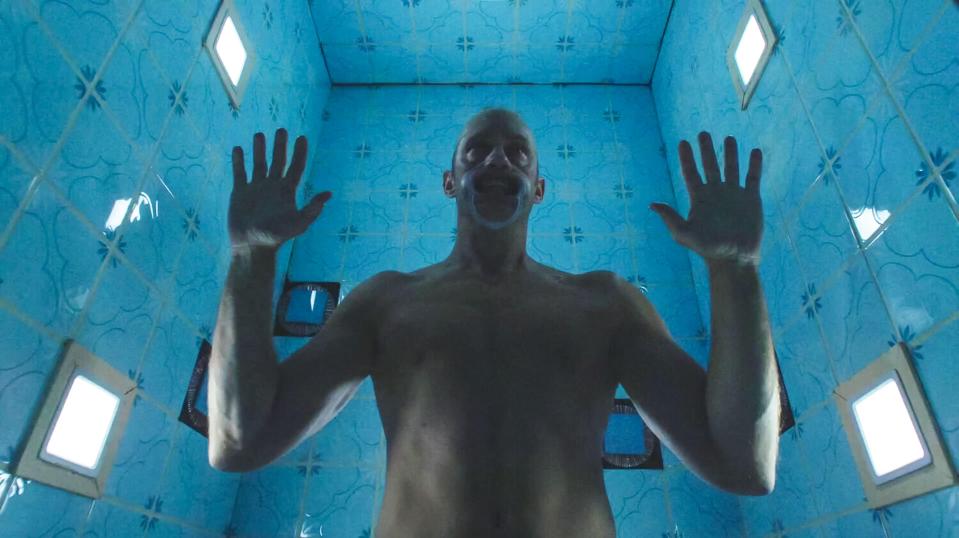
“Infinity Pool”, directed by Brandon Cronenberg, is a surreal and unapologetic exploration of privilege, morality, and the consequences of unchecked hedonism. Set in an exclusive resort in a fictional country, the film follows author James Foster (Alexander Skarsgard) seeking inspiration, accompanied by his partner Em (Cleopatra Coleman). When a fan named Gabi (Mia Goth) introduces them to forbidden pleasures, their actions lead to a fatal accident and a confrontation with ominous authorities.
Thomas Kretschmann portrays Thresh, the leader of these authorities, who reveals the country’s unique policy: the victim’s son must avenge murder. However, there’s an alternative for the wealthy—the cloning process. Wealthy individuals can create a clone to experience their own murder without consequences, raising questions about morality and accountability.
As the characters, including James and Em, grapple with the absence of consequences, the film delves into the amorality of a world without repercussions. The use of masks resembling deformed faces adds anonymity, and Cronenberg raises existential questions about identity. The film’s confident and compelling execution, along with committed performances from Skarsgard and Goth, contributes to its intriguing narrative.
Brandon Cronenberg’s “Infinity Pool” showcases his continued evolution as a filmmaker, exploring high-concept scenarios to challenge perceptions of human decency. Despite inevitable comparisons to his father, David Cronenberg, Brandon establishes himself as a captivating filmmaker with a distinctive vision. “Infinity Pool” stands independently, affirming Brandon’s unique voice in the world of cinema.
The Creator

In Gareth Edwards’ film “The Creator”, the exploration of artificial intelligence takes an unconventional turn, intertwining societal dynamics and the consequences of human actions. Headlined by John David Washington as Joshua, the movie unfolds in a post-apocalyptic world where AI entities face treatment akin to a disenfranchised minority, prompting reflections on contemporary struggles.
Edwards adeptly weaves Joshua’s personal journey, marked by bitterness and grief, into the larger narrative of a world at odds over AI-fueled robots. The film addresses issues of displacement and automation fears, aligning with ongoing discussions about technology’s impact on labor. While introducing AI characters with consciousness, the movie strategically directs attention to individuals determined to eradicate them, emphasizing the multifaceted symbol of otherness.
Edwards, recognized for his work in digital effects, once again displays visual prowess, crafting a visually intriguing world that blends futuristic elements with the familiar. The film’s emotional core emerges through Joshua’s internal struggles and transformation, offering a poignant exploration of personal redemption amid a backdrop of war and turmoil.
“The Creator” pays homage to iconic science fiction and incorporating elements from various genres. The setting in a polyglot nation resembling Southeast Asia adds a unique dimension to its thematic exploration. The movie navigates the complexities of power, imperialism, and the blurred lines between heroism and villainy.
As Joshua confronts his biases and grapples with the consequences of his past actions, “The Creator” becomes an examination of American imperialism. The film strikes a balance between visually arresting sequences and a nuanced exploration of themes, providing audiences with a cinematic experience that transcends traditional science fiction boundaries.
Jung_E
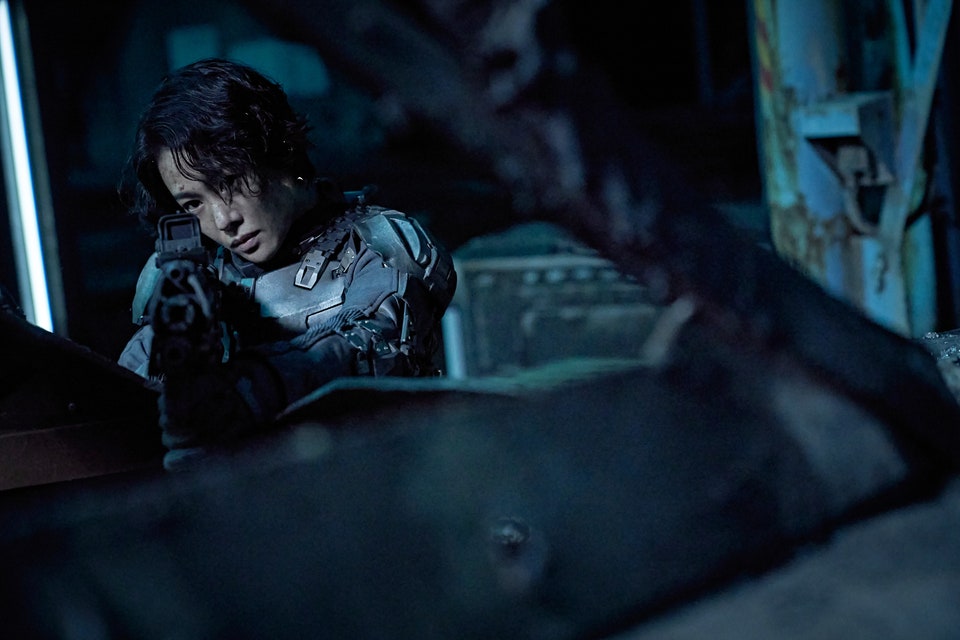
Director Yeon Sang-ho’s “Jung_E” takes on the sci-fi action genre, while exploring deep philosophical questions about humanity. Set in 2194, the picture envisions a future where mankind has made Earth uninhabitable, leading to factions at war within man-made shelters.
The plot revolves around Yun Jung-yi, a formidable soldier whose consciousness is sought to be downloaded into an A.I. named Jung_E. The film delves into the complexities of recreating Yun’s memories, particularly the moment of her death, to enhance her capabilities in the ongoing war. Leading the project is Seohyun, Yun’s daughter, and Sang-Hoon, a more clinical and cynical figure.
“Jung_E” showcases Yeon’s skill with set-pieces, including an impressive opening action sequence and a gripping climax on a speeding train. The focus on the ethical implications of consciousness transfer and economic inequities adds additional depth to the picture.
It introduces interesting ethical ideas and sets the stage for a potential sequel with a richer and more ambitious storyline. “Jung_E” holds promise for further exploration of its futuristic world and themes in future installments.
Rebel Moon – Part One: A Child of Fire
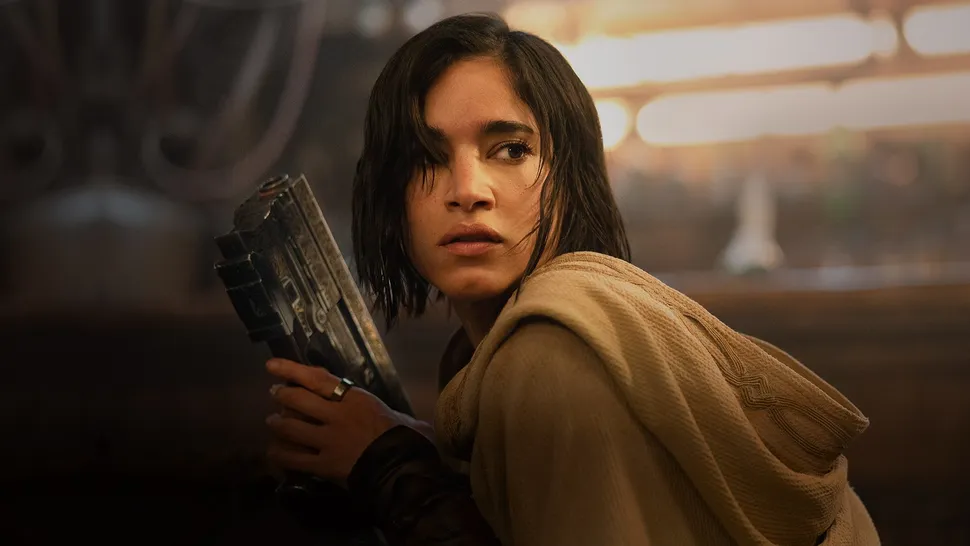
Zack Snyder’s “Rebel Moon” promises an original sci-fi fantasy adventure, showcasing the creation of an imposing Dreadnought-class ship set to terrorize the universe. Production designers emphasize the vessel’s brutal ergonomics, designed for the sole purpose of destruction. The film’s first installment, “A Child of Fire”, is set to be released on 21 December 2023, with the second part, “The Scargiver”, following in April 2024.
The narrative revolves around Kora (Sofia Boutella), a lone-wolf soldier finding community on the farming moon of Veldt. Her violent past resurfaces when Admiral Atticus Noble (Ed Skrein) arrives via a Dreadnought, causing deadly trouble on behalf of the tyrannical regent Balisarius (Fra Fee). Kora embarks on a rebellious quest to recruit freedom fighters, forming a diverse group of characters played by actors such as Michiel Huisman, Anthony Hopkins, Charlie Hunnam, Djimon Hounsou, and others.
Snyder describes the characters as misfits healing and finding a sense of belonging, emphasizing the film’s theme of “finding a family.” While the film offers emotional depth, it also features Snyder’s signature action sequences with numerous weapons. The battle between brutality and harmony is a central theme, contrasting the destruction brought by the Imperium with the kindness and integration found on Veldt.
As for Zack Snyder’s involvement, he serves as the director of photography, director, and co-writer. The picture showcases unique weapons, such as Nemesis’ heated blades, adding distinctive visual elements. Snyder’s attention to detail extends to the creation of languages, alphabets, currency, and origin stories, contributing to the film’s mythology, and offers a new expansive and detailed world for audiences to dive into.
Asteroid City
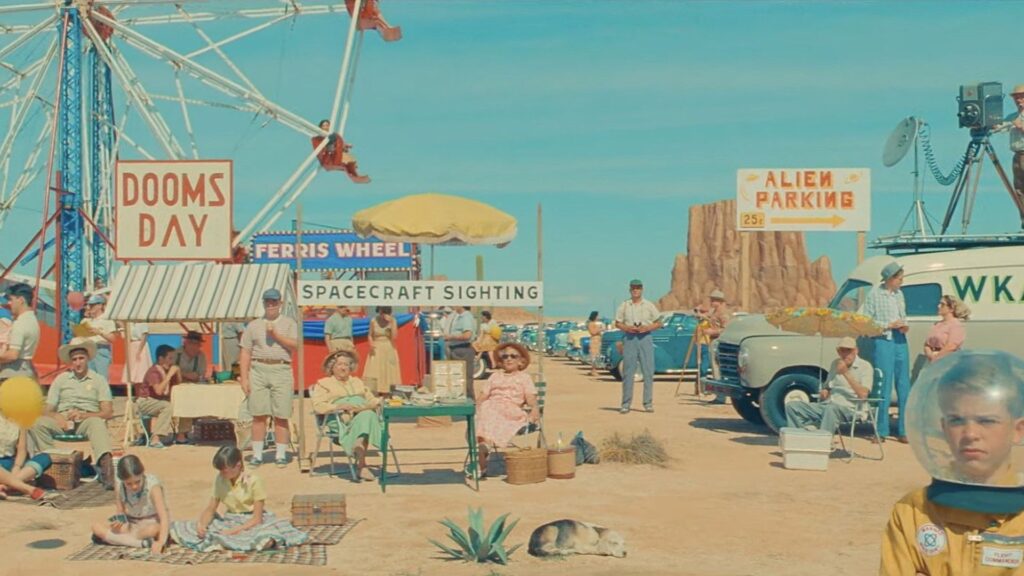
In Wes Anderson’s “Asteroid City”, the director crafts a highly stylized and emotionally resonant narrative that explores the intersections of performance, grief, and the search for meaning. The film centers around Conrad Earp, portrayed by Edward Norton, a fictional playwright whose hit play becomes the focal point of the picture.
The movie opens in black-and-white, adopting a square Academy ratio reminiscent of a 1955 TV documentary. Narrated by Bryan Cranston, the faux documentary introduces the theatrical production “Asteroid City,” presented by Anderson in vibrant color and widescreen format. The film seamlessly weaves together multiple narratives, showcasing the story of Conrad Earp’s play set in a remote Western meteor crash site hosting a Space Camp, and Earp himself struggling to write a good play
The exquisite cinematography by Robert Yeoman captures the beauty of the desert setting, creating visually arresting frames that enhance the storytelling. Anderson excels in packing the narrative with diverse characters, each carrying their own quirks and challenges. The brilliance of scholastically gifted teens and their futuristic inventions adds a layer of intrigue to the plot.
The human drama unfolds as characters, including Augie Steenback (Jason Schwartzman), navigate grief, interrupted by two visitations from an alien spacecraft. Scarlett Johansson delivers a beguiling performance as Midge Campbell, a movie star coping with melancholy, while Schwartzman’s portrayal of Augie showcases newfound maturity and gravitas.
As the characters grapple with existential questions and the meaning of life, the film celebrates the joy of creation, performance, and human invention. Anderson masterfully explores the complexity of relationships and the pursuit of authenticity, leaving the audience with profound questions about existence.
“Asteroid City” offers a unique blend of Anderson’s signature stylization and genuine emotional impact. With echoes of cinematic classics and a heart firmly rooted in the exploration of life as performance, the movie earns praise as a sui generis contraption and a worthy addition to Anderson’s oeuvre.
They Cloned Tyrone
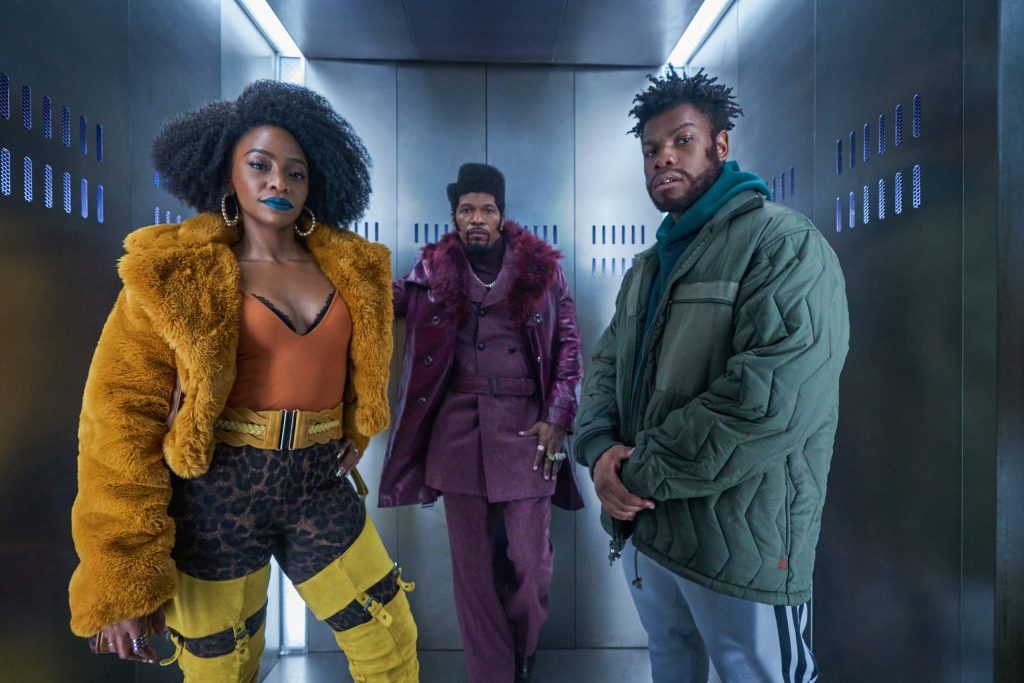
“They Cloned Tyrone”, directed by Juel Taylor, unfolds as a sci-fi narrative centered around Fontaine (John Boyega) in the neglected urban landscape of the Glen. The film explores conspiracy theories, identity, and survival within the Black community. Fontaine, a complex drug dealer, encounters death, triggering an investigation involving Slick Charles (Jamie Foxx) and Yo-Yo (Teyonah Parris).
They uncover a subterranean laboratory accessed through elevators, symbolizing external forces undermining the Black community via spaces related to food, religion, and beauty products.
The narrative delves into assimilation, upward mobility, respectability politics, racial passing, and distrust of institutional professionals within the African American community. Taylor portrays Black self-hatred as a significant concern, paralleling it with extensions of white contempt.
Spirited performances by Foxx, Parris, and Boyega retrofit common stereotypes into a rich, dynamic humanistic portrayal of urban Black life.
The Wandering Earth II
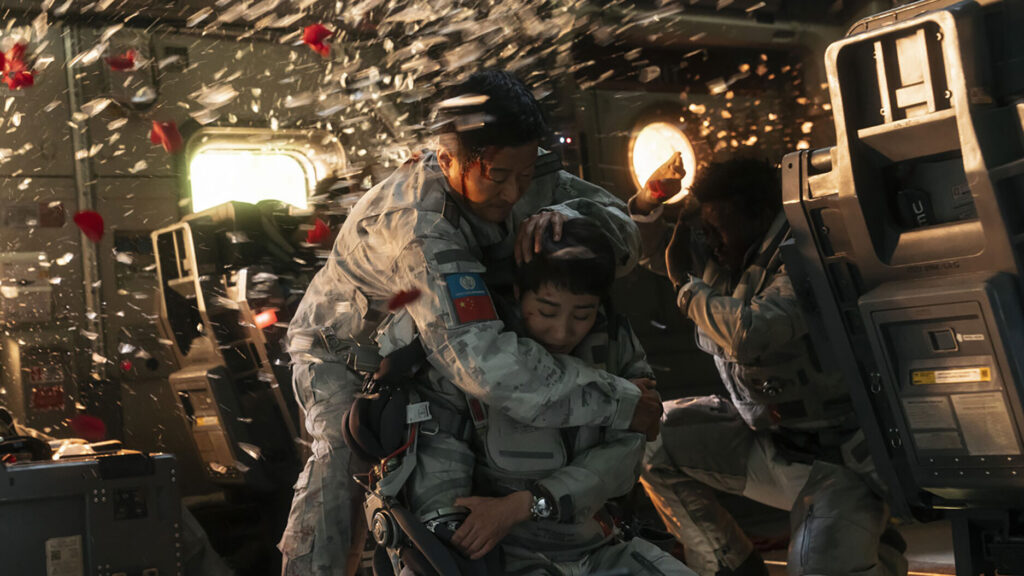
Directed by Frant Gwo and released in 2023, “The Wandering Earth II” serves as an ambitious and visually striking prequel to the 2019 hit “The Wandering Earth.” The film features a stellar cast, including Andy Lau, Wu Jing, Li Xuejian, Sha Yi, Ning Li, Wang Zhi, and Zhu Yanmanzi.Set before the events of its predecessor, the film follows a younger Liu Peiqiang, portrayed by Wu Jing, and a group of scientists and astronauts combating global disasters. Packed with visually impressive sequences, the movie maintains the blockbuster appeal of the original, offering answers to lingering questions.
The opening drone-based assault on the international space elevator sets an intense tone. As the narrative unfolds, the film seamlessly transitions into an ecological disaster, featuring an underwater rescue mission and a Mars invasion.
The sequel successfully manages to take a more nuanced approach than the first installment regarding political commentary on global dynamics. Despite its spectacle, “The Wandering Earth II” embraces a somber tone, allowing characters to age and exploring themes of artificial life with depth. The franchise promises to continue exploring the disasters awaiting humankind on its journey toward Alpha Centauri, and there is plenty of material for another sequel.
65
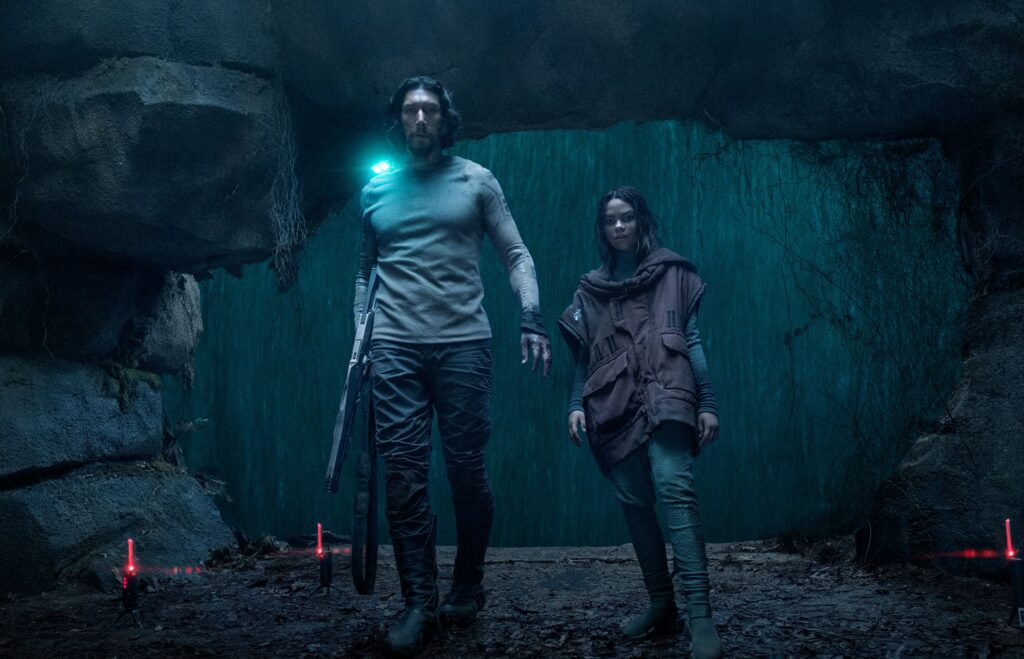
“65” is a big-budget sci-fi film directed by Scott Beck and Bryan Woods, known for their work on “A Quiet Place.” With a reported production cost of $91 million and a feature spot in a Super Bowl ad, the film attempts to balance elements of a wild survival story and a poignant family drama. Set against an intriguingly contradictory premise, it unfolds 65 million years ago but envisions futuristic civilizations coexisting on planets throughout the universe.
Adam Driver takes on the role of Mills, a space pilot embarking on a two-year exploratory mission to fund medical treatment for his ailing daughter. The narrative unfolds as the ship faces unexpected challenges, leading to a crash on Earth during the Cretaceous period. Mills and a girl named Koa, portrayed by Ariana Greenblatt, must navigate the prehistoric terrain to reach an escape pod and evade dinosaurs.
The cast, featuring Adam Driver’s intense performance and Ariana Greenblatt’s portrayal of Koa, works well within the film’s framework. Despite moments of creature-induced tension, the film concludes with a climactic sequence involving quicksand, a Tyrannosaurus rex, a geyser eruption, and an asteroid shower.
